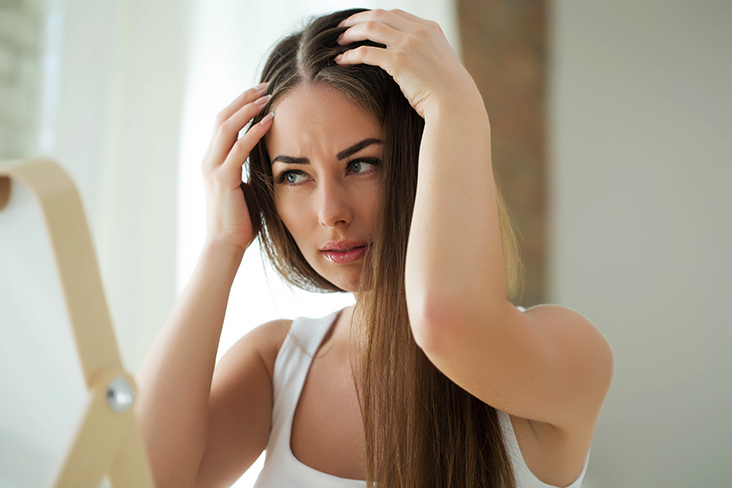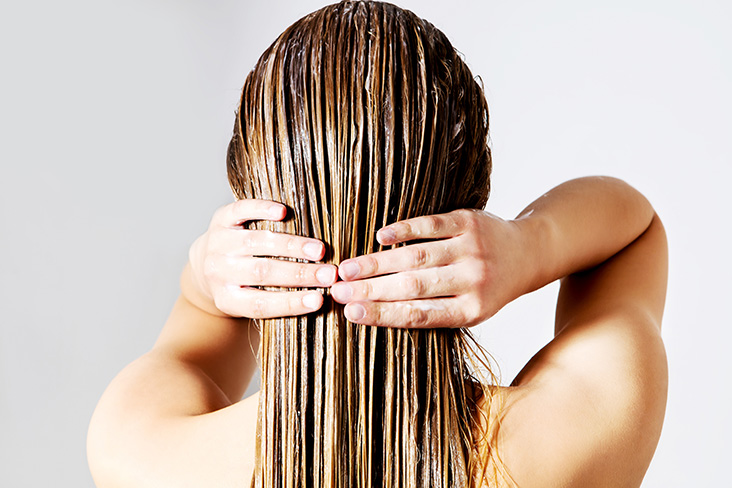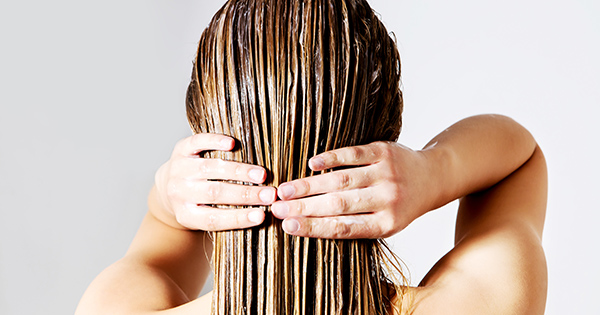The health of your scalp can have a big impact on how your hair looks. With proper scalp care, you can avoid the discomfort of an itchy scalp or unsightly dandruff flakes.

Is your hair care routine helping your scalp’s health? Find out which products can be helpful and what the best hair care routines are. Then, learn some DIY scalp treatments.
What’s Underneath Your Hair?
First, consider the biological architecture of your scalp.
Below your skin, your scalp is made up of hair follicles and sweat glands. “Each hair grows from, and through, an individual follicle which surfaces on your scalp,” says scalp specialist Guy Parsons. “It’s essential that the follicle and the scalp, at point of exit, are clean, clear, healthy and maintained; follicles that are full of [oils] or blocked by dead skin, dandruff or infection will have an impact on the quality of hair growth.”
What to Know About Shampoo and Your Scalp
Not all hair types benefit from a daily shampoo. However, while dry shampoo can help your hair look good by managing its oils, it doesn’t benefit your scalp in the same way as a regular wash.
A healthy scalp needs proper washing to cleanse, remove product buildup, and maintain healthy oil balance. Each time you wash your hair, be sure that you scrub your scalp as vigorously as they do during a shampoo at the salon.
Should You Use Conditioner on Your Scalp?
Some hair stylists avoid putting conditioner directly on the hair’s roots, while others find that the added moisture produces better results. The best method for you is determined by your hair type.
If your hair tends to be oily, apply conditioner starting at mid-length, working the product toward the end of your hair. This helps you add the moisture where it’s needed while avoiding an overly oily scalp.
If you’re hair is on the dry side, both your scalp and hair can benefit from conditioning the full length of your hair, from roots to ends.
Benefits of Weekly Scalp Exfoliation
Just as your skin is rejuvenated from exfoliation treatments, a scalp scrub can help you remove the dead skin cells that can lead to dandruff, itchy scalp, and dull hair.
With a scalp scrub product, the textural additives will help give your scalp a healthy exfoliation and improve its health by keeping hair follicles clear. Keep in mind that while scalp exfoliation can help most people, those with sensitive skin may experience irritation of scalp if exfoliation is done too aggressively.
Do You Have Dandruff or Dry Scalp?
Have you seen flakes of skin falling from your hair? This could be the result of either dandruff or a dry scalp. While the results of flaking skin are the same, the underlying problem is much different. Dandruff is caused by too much oil on the scalp, which builds up and flakes off. With a dry scalp, the irritated skin flakes off.
In both instances, your scalp may be itchy. However, dry scalp is identified by small-sized flakes and dry skin on other parts of the body. Comparatively, dandruff is identified by large, oily flakes in white or yellow, and other parts of the body may have oily, red, or scaly skin.
Because the two scalp problems are caused by different issues, they need different types of treatment.
Using a Natural Scalp Rinse to Treat Dandruff
If your dandruff is caused by product build-up, try visiting your local salon for a clarifying hair and scalp treatment. At the Ogle School Salon in Texas, the cost is only $7 per treatment, making it an affordable add-on to your hair care. At salons such as Ulta Beauty, a clarifying treatment costs $20, nearly three times the rate at Ogle.

When treating dandruff at home, you’re primarily working on balancing your scalp’s oil production. Additionally, oily scalps can have a natural yeast-like fungus that feed on your scalp’s oils and exacerbates the skin flaking.
An effective dandruff treatment combines an astringent to manage the oils along with antibacterial and antimicrobial properties. Here are three great DIY recipes for treating dandruff.
#1. Apple cider vinegar: An ACV hair rinse can help you lower the pH of your scalp and tighten your hair follicles. It’s also antibacterial and anti-inflammatory, helping to calm any current flare-ups. To make a rinse for your scalp, mix a few tablespoons of vinegar into about a cup of water. A stronger mixture can be up to ¼ cup vinegar to ¼ cup water. Spritz the mixture over your hair and massage into the scalp. Let it sit for 15 minutes and then wash.
#2. Tea tree oil: This is an excellent antiseptic, antimicrobial, and antibacterial. If applied directly to the skin, it can cause inflammation, so create a diluted solution. For a scalp rinse, combine five to seven drops of tea tree oil with one cup of water. Spritz the mixture on your scalp and let sit for 20 minutes before shampooing. If you’re short on time, you can add a few drops of tea tree oil directly to your shampoo before massaging it into your scalp.
#3. Green tea and peppermint: The combination of antioxidants and antimicrobial power make this a great rinse for dandruff maintenance. To get the cooling and soothing effects, combine one cup of room temperature green tea with 2-3 drops of peppermint essential oil. Pour the mixture over wet hair, massage into scalp, let it sit for five minutes, and then wash. You can even add a teaspoon of apple cider vinegar to this mix for an added boost.
Moisturizing DIY Hair Masks for a Dry Scalp
The antidote for a dry scalp is a moisture-rich mask. If you also have dry or damaged hair, you can use these masks as a full treatment from roots to tips.
To help moisturize your scalp and reduce its flakiness, try these three DIY hair masks that use ingredients from your kitchen.
#1. Coconut oil: A great moisturizer, coconut oil contains a high amount of medium chain fatty acids. It’s the powerhouse combination of reducing inflammation, moisturizing, and fighting bacteria. Because it’s easiest to apply to your scalp when liquefied, use slightly warmed coconut oil, massaging about 3 tablespoons into your scalp. Let it sit for 15 minutes before shampooing.
#2. Banana and avocado: This mixture has been called a smoothie for your scalp. The avocado provides rich hydration through healthy fats, and the banana is soothing and moisturizing with lots of added nutrition. To use, simply mash two bananas with one avocado. Massage the mixture into your scalp and let it sit for 30 minutes before washing.
#3.Sesame oil: This moisturizing oil is anti-inflammatory, anti-viral, and anti-bacterial. It’s also widely used in Ayurvedic formulas to strengthen and nourish. To help with a dry scalp, simply massage a few tablespoons of sesame oil into the scalp before washing. Additionally, you can use the sesame oil as a carrier for other beneficial essential oils, such as rosemary oil.
Students at Ogle School learn the latest beauty and hair care trends, graduating in as little as 11 months.



